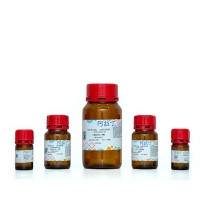Hepatitis C Virus Heteroduplex Tracking Assay: Application to Genotype Determination, Quasispecies Analysis, and Molecular Evolution Studies
互联网
互联网
相关产品推荐

Recombinant-Hordeum-vulgare-High-molecular-mass-early-light-inducible-protein-HV58-chloroplasticHigh molecular mass early light-inducible protein HV58, chloroplastic; ELIP
¥10556

Clay Evolution 建筑 3D 打印线材,clay effect, 直径1.75mm, suitable for outdoor,阿拉丁
¥320.90

Recombinant Hepatitis C virus (HCV-1a) E2 Protein (His Tag) | 重组丙型肝炎病毒 (HCV-1a) E2 蛋白 (His标签)
¥4520

SARS-CoV-2 (2019-nCoV) Nucleocapsid/N Antibody Titer Assay Kit | SARS-CoV-2 (2019-nCoV) Nucleocapsid/N Antibody Titer Assay Kit
¥5000

HBV Capsid Protein重组蛋白|Recombinant Hepatitis B Virus(HBV) Capsid protein(His Tag)
¥4520
相关问答

